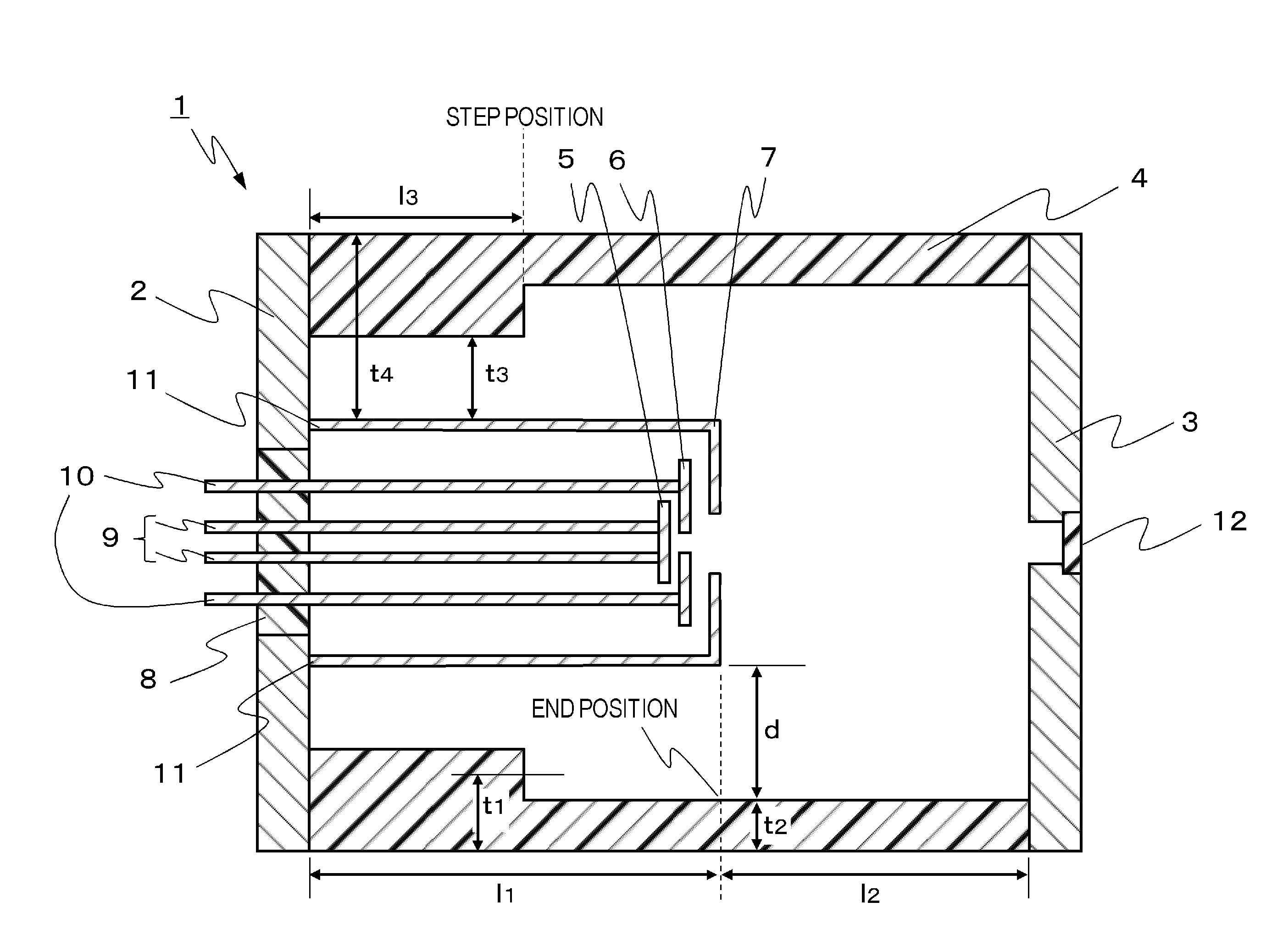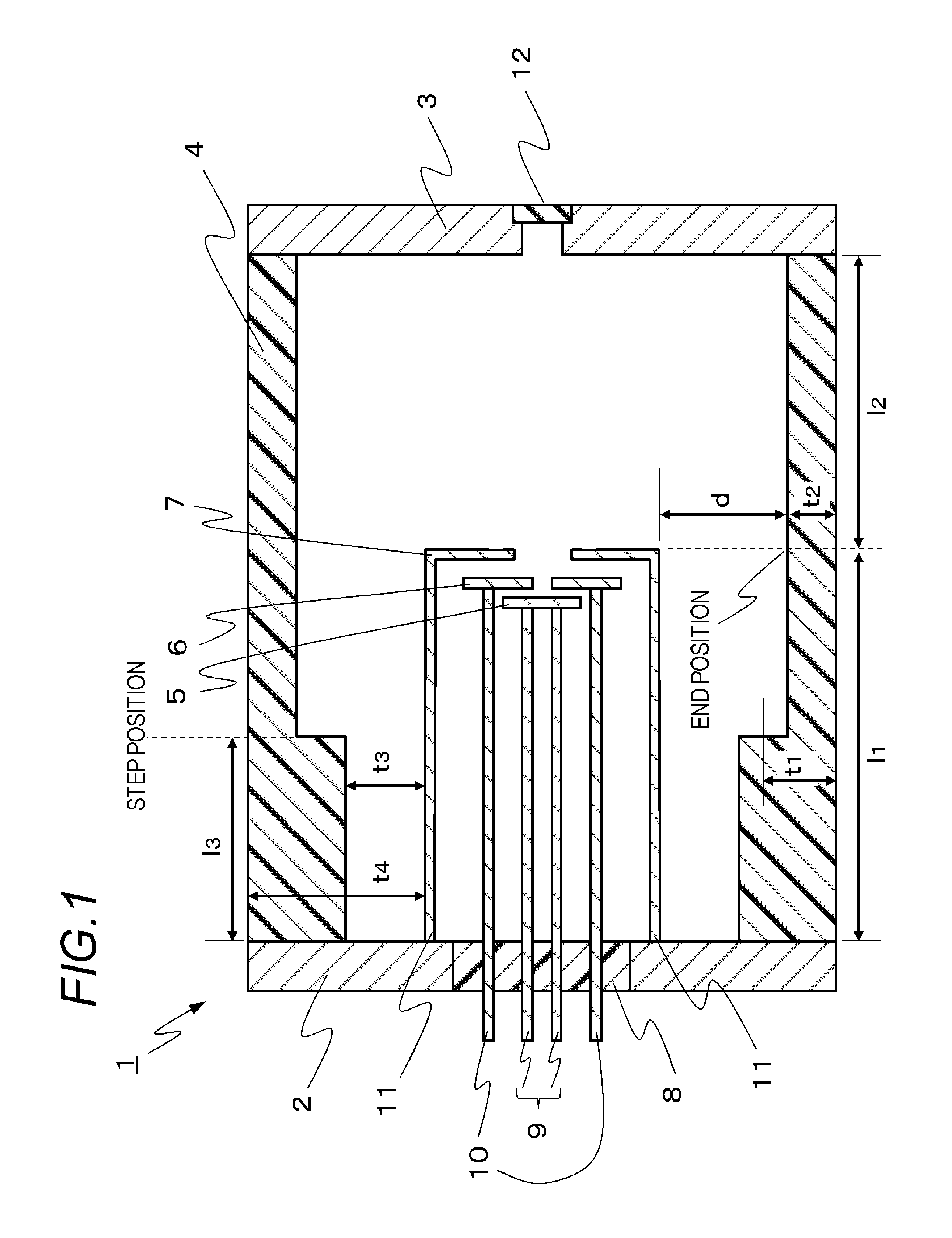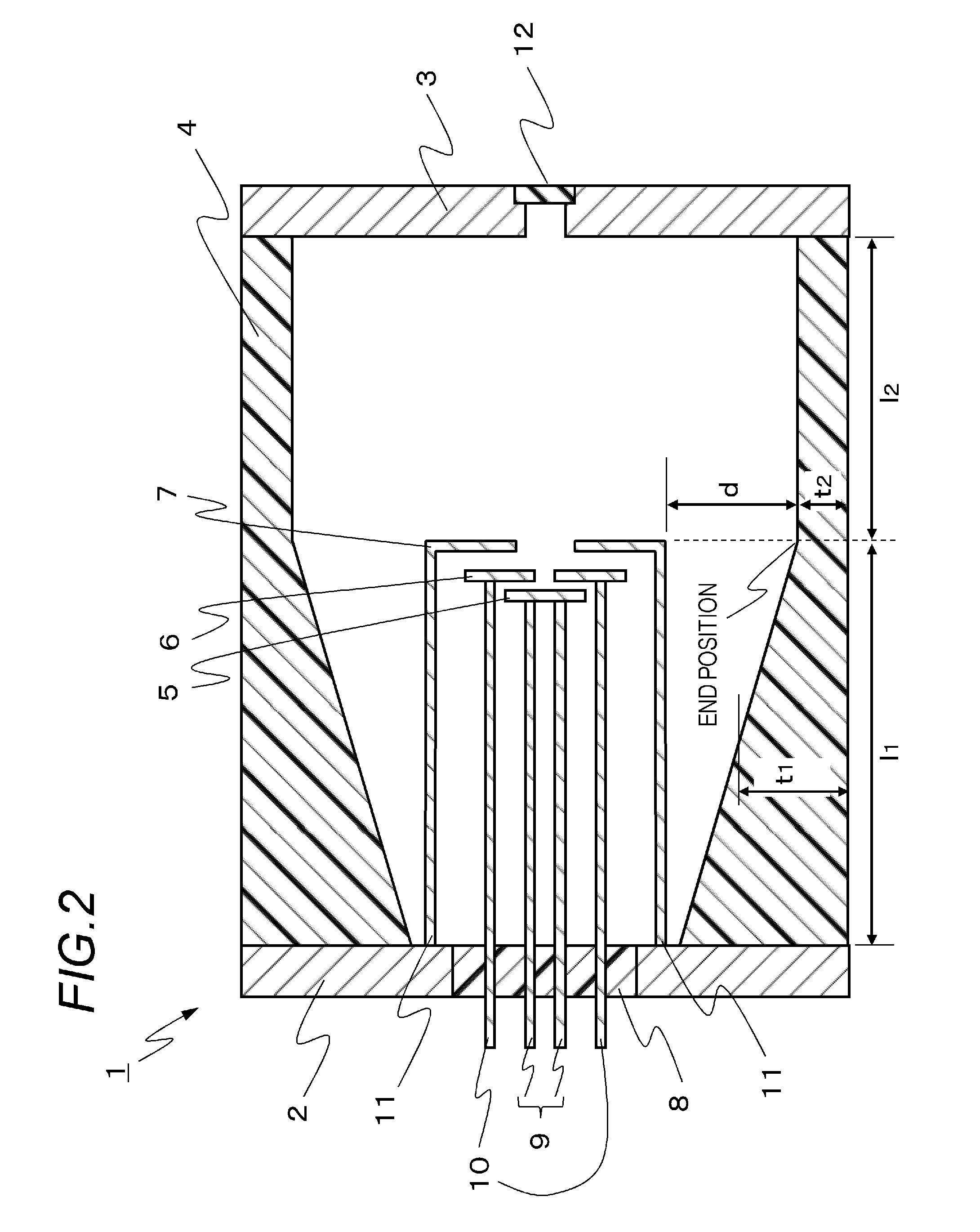X-ray tube and radiation imaging apparatus
a radiation imaging and tube technology, applied in the field of x-ray tubes, can solve the problems of difficult downsizing, difficult diameter of glass tubes, and inability to resist voltage, and achieve the effect of improving voltage withstand capability
- Summary
- Abstract
- Description
- Claims
- Application Information
AI Technical Summary
Benefits of technology
Problems solved by technology
Method used
Image
Examples
first embodiment
[0021]FIG. 1 is a configuration diagram of an X-ray tube according to the present embodiment and is a sectional schematic diagram of the X-ray tube according to the present embodiment cut along a plane including a cathode, an anode, an insulating tube, an electron gun, and a target.
[0022]An X-ray tube 1 is a vacuum tube comprising an envelope having a cathode 2 at one end and an anode 3 at another end of a barrel of a tubular insulating tube 4, an electron gun arranged inside the envelope, and a target arranged at the anode.
[0023]The cathode 2 is connected to the electron gun shaped so as to protrude from the cathode 2. The electron gun comprises an electron source 5, a grid electrode 6, a focusing electrode 7, an electron source driving terminal 9, a grid electrode terminal 10, and a focusing electrode terminal 11, and a gap is provided between an outer surface of the electron gun and an inner wall of the insulating tube 4. The term “outer surface of the electron gun” as used in th...
first example
EVALUATION OF FIRST EXAMPLE
[0044]Between the first example and the first comparative example, ratios of field intensity between the end position and the anode-side end of the focusing electrode were 1:1.02 or, in other words, approximately equal to each other. In addition, a measurement of withstand voltages of the X-ray tube according to the first example and the X-ray tube according to the first comparative example revealed similar withstand voltages. Consequently, the X-ray tube according to the first example had achieved downsizing of 13% in volume ratio compared to the first comparative example without sacrificing voltage withstand capability.
SECOND EXAMPLE
[0045]A configuration diagram of an X-ray tube according to the present example is shown in FIG. 2. The X-ray tube according to the present example differs from the first example in the outer diameters of the cathode 2, the anode 3, and the insulating tube 4, and in the shape of the inner wall of the insulating tube 4. Mater...
second example
EVALUATION OF SECOND EXAMPLE
[0047]Between the second example and the first example, ratios of field intensity between the end position and the anode-side end of the focusing electrode were 0.97:1 or, in other words, slightly lower in the second example. In addition, a measurement of withstand voltages of the X-ray tube according to the second example and the X-ray tube according to the first example revealed similar withstand voltages. Consequently, the X-ray tube according to the second example had achieved downsizing of approximately 20% in volume ratio compared to the first comparative example without sacrificing voltage withstand capability.
THIRD EXAMPLE
[0048]The X-ray tube according to the present example uses the same materials and has the same configuration as the second example with the exception of borosilicate glass being used as the insulating tube 4.
PUM
 Login to View More
Login to View More Abstract
Description
Claims
Application Information
 Login to View More
Login to View More - R&D
- Intellectual Property
- Life Sciences
- Materials
- Tech Scout
- Unparalleled Data Quality
- Higher Quality Content
- 60% Fewer Hallucinations
Browse by: Latest US Patents, China's latest patents, Technical Efficacy Thesaurus, Application Domain, Technology Topic, Popular Technical Reports.
© 2025 PatSnap. All rights reserved.Legal|Privacy policy|Modern Slavery Act Transparency Statement|Sitemap|About US| Contact US: help@patsnap.com



